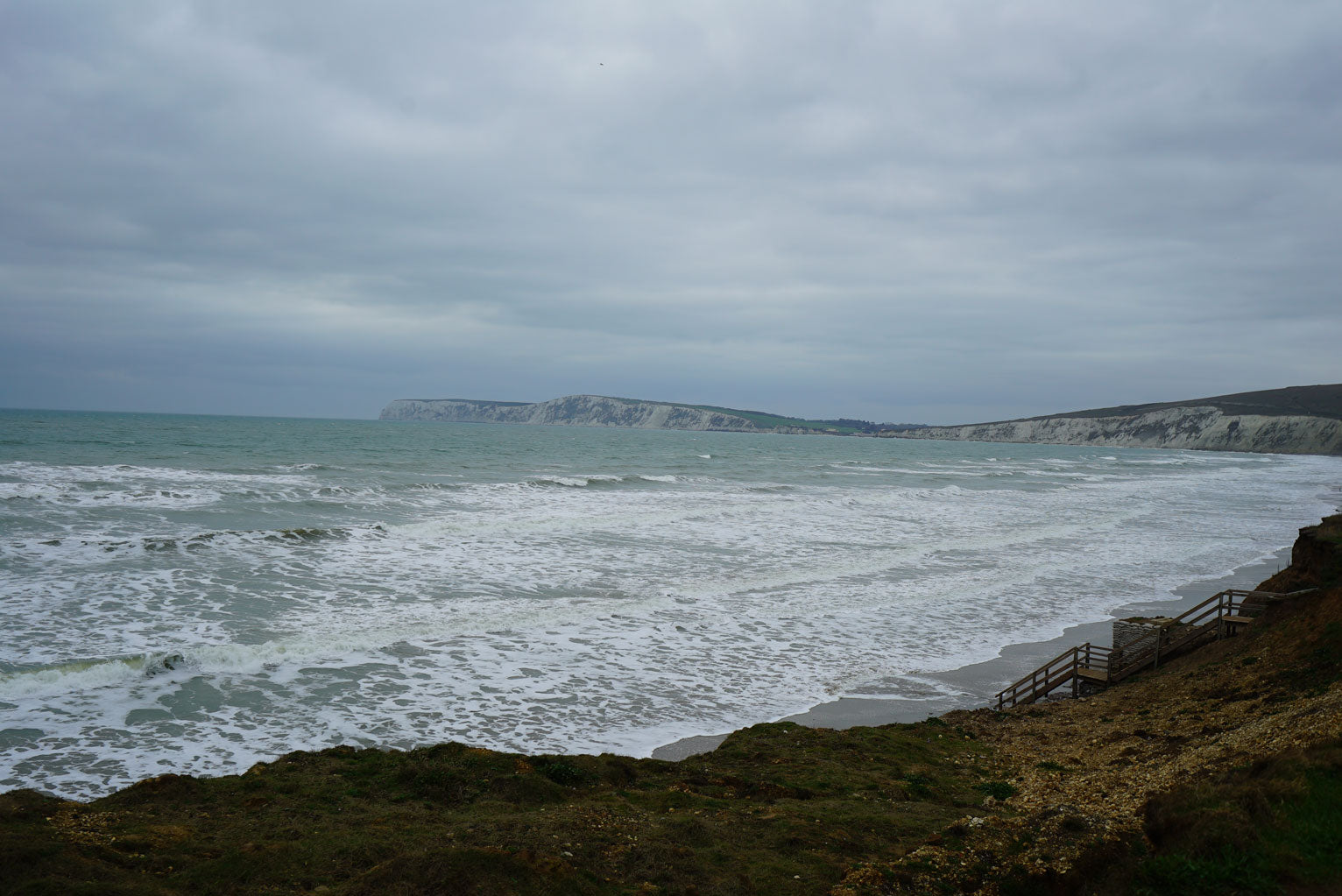MASTER OF CRAFT
A GLOBAL PERSPECTIVE
COWES, ISLE OF WIGHT
Scroll to explore
The Story
IN CONVERSATION WITH CHRIS ADAMS
GLOBEMAKER ON ISLE OF WIGHT
Chris Adams is a globemaker residing on the Isle of Wight just off the coast of England near Southampton. An early curiosity of orienteering was fostered by a childhood of exploring the moors solely by himself in his native Devonshire. As Adams grew into an adult in search of a meaningful profession, an opportunity to become a globemaker arose to further cultivate this passion of mapmaking allowing him to utilize his collegiately refined painterly and fine art skills. Today, Adams is the founder of Lander & May, an atelier specializing exclusively in bespoke globes and high-end historical restoration. Through this work, he aims to create relevancy for globes in the modern digital world without abandoning the traditional techniques of the makers who came before him.

I instill historical
CHRIS ADAMS, GLOBEMAKER
context in my work
and consider myself the
latest in a long line of
globemakers.
S+O — HOW DID YOU GET YOUR START AS A GLOBEMAKER?
Adams — I've been making globes for almost thirteen years now. I was introduced to another globemaker and was given the opportunity to learn the skills, which I seized with both hands because of my pure fascination with maps and mapmaking. It seemed a natural progression. Obviously, I had always had a globe when I was a child. But the thought of actually being able to produce a globe myself was exciting. I’ve been enthralled by it ever since. I just love making globes. They're fantastic objects. I’ve been making them in my own studio for about five to six years now.
S+O — WHEN DID YOUR FASCINATION OF GLOBES COME ABOUT?
Adams — Globes have always been there for me. I received my first globe when I was eight years old. It was made of tin. I think it was a money box, actually. I used to put my loose change in there. I certainly remember having other globes as well growing up, ones with lights, ones of the moon. It's a lovely thing for a child to be able to spin a globe and see where they are on the globe and what's on the other side of it.

S+O — WHAT KIND OF GLOBES ARE YOU COMMISSIONED FOR?
Adams — I make globes of varying sizes from one to forty-two inches, which is quite large. Because my globes are bespoke, I get the chance to customize them for clients. So if they have traveled extensively and wanted their routes plotted on the globe or if they wanted their little town marked on it, I could quite easily do that for them.
I've been commissioned by museums and private collectors around the world. I've made globes for films and television. One of the globes I've made recently is for a blockbuster Hollywood movie coming out next year, which my sons are very excited about because it's with their favorite actor, so we're looking forward to seeing it. I am particularly proud of being associated with the Victoria and Albert Museum where one of my handmade globes is on display.
S+O — WHAT IS THE PROCESS UNDERTAKEN TO MAKE A GLOBE?
Adams —The historical processes inform and complement my craftsmanship. For me, authenticity is important. It gives the finished product authority. It gives it substance. I've always used plaster. It’s what globes were traditionally made from. I’ve tried to remain faithful to the way old artisans made the mold, however I’ve reversed the plaster process slightly. I skim the mold with plaster. Then, when it is dry, I line it with paper and plaster so it's a form of papier-mâché to reinforce the plaster shell. The paper gives it rigidity, a bit of extra strength, whilst retaining its lightweight nature.
It's fairly important to me to maintain a certain weight to the globe. I could make them ever lighter, given today's advances and improved technology for the construction of the plaster, but I think it should have a weight to it or else it might feel plasticky and cheapened. Then when the two hemispheres are dry, they are joined together and sanded down to form a smooth sphere upon which the gores can be laid. The gores are the map sections that are applied to the globe. There are twelve in total and they're applied one at a time.
I also design the bases. A few of them I've re-developed from existing historical styles, but we have also come up with modernized designs. I try to incorporate wood that has a history behind it. I feel it's important to give new life to older pieces. Because we are in Cowes, there are a lot of boatyards here that are renovating old boats. If I come across a particularly famous boat, or it has some historical resonance, I prefer using wood that's been salvaged from that boat. I'm currently producing a wooden stand utilizing wood from Osborne House, Queen Victoria’s palatial holiday residence.




S+O — WHAT ARE THE DESIGN CONSIDERATIONS THAT YOU KEEP IN MIND?
Adams —There are a number of issues I need to think about when I'm designing a new globe. This ranges from the aesthetic appearance of the globe to the information that will be portrayed, they are objects to gather information from after all. I try and imbue every contemporary globe with a certain sense of twenty-first century aesthetics. Moreover I see myself as a craftsman, as somebody who records where we are in the world. A lot of my hours are spent at the computer plotting places and upgrading the maps. It's an ever-changing geography. Borders and place names are constantly changing. A thorough way of dating a globe is by identifying what's on there and what's not. For example, you can pinpoint a globe to the eighteenth century by the fact that New Zealand isn't there or the Northwest Passage hasn't been discovered. Globemaking is surely a combination of craft, science and aesthetics.
S+O — WHAT IS THE MOST REWARDING ASPECT OF YOUR WORK?
Adams —It's a nice feeling looking at old globes and being able to date them by what's on there, knowing that my own globes, in hundreds of years’ time, will probably be similarly judged. That does imbue a sense of responsibility upon me to make sure every globe is perfect in order to stand the test of time. People will be looking at them for, hopefully, centuries as they do now for globes produced hundreds of years ago. It’s rewarding to think that they will be enjoyed by generations to come.
S+O — WHY ARE GLOBES RELEVANT IN TODAY’S AGE?
Adams — I think there's still a place for globes in education, in schools, in colleges. Before the days of the internet, every school would have a globe. Nowadays, we mostly get our information from Google Earth, or an iPad or an electronic device, resulting in a flat representation of the earth. There's something tangible about being able to spin a globe, especially for a child, to physically touch it and say, "I'm here, what's around the other side?”




Credits
Photography by Jamie Leilani Pelayo
Filming by Shawn Butcher
Special Acknowledgments - The Adams Family of Lander & May Globes
The Objects
Exclusive Edition 025 Lander & May Bespoke Globe
The globe derives its name from the latin word “globus” which means sphere. The earliest form of the terrestrial globe appeared during the mid-second to third century BCE, around the time that the sphericity of the Earth was established by Greek astronomy. Globemaking became prominent in Great Britain in the eighteenth century CE when the country was known as the scientific and commercial center of the world due to its fervent exploration and empire expansion.
The Destination
COWES, ISLE OF WIGHT
Cowes on the Isle of Wight is a charming seaport town and international yachting center on the Solent, separating the small island from England. Given its proximity to the major English port of Southampton and frequent ferry service, Cowes is often the gateway to the isle which hosts both a popular music festival and one of the longest running regattas in the world, known as Cowes Week. Queen Victoria built her beloved summer residence, the Osbourne House, in East Cowes which remains a major attraction for island visitors.
Many notable English thinkers and poets have taken up residence on the island over the centuries, including Lord Alfred Tennyson, in search of quiet respite amongst its peaceful, awe-inspiring vistas and natural landscapes.



